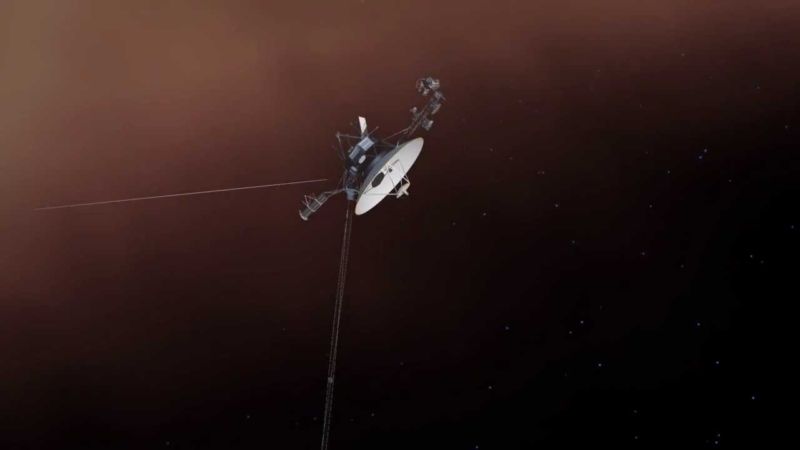
I've made no secret that the Voyager probes' journey through the outer Solar System was a major influence on my childhood. So I was shocked to find out that I had missed the airing of what may be the definitive story of their mission. I was fortunate enough to correct my mistake thanks to NYU's science journalism program. For anyone else at all interested in science, NASA, space, or the human side of science, this review serves as a warning: the story will be shown one more time on November 15. Do not miss it.
The story is a documentary called The Farthest, a name that focuses on Voyager 1's current fate as the only human-made object to have left the Solar System. But the movie follows both Voyagers from when they were just an idea struggling to get funding, through potentially mission-ending issues, and on to their status as the definitive exploration mission of the last century. And The Farthest does all that primarily through the words of the scientists who ran the mission and analyzed the data in real time as it came in.
The scientists are quirky, expressive, passionate, and fundamentally human, things that are lacking from most portrayals in popular culture. The film helps you come away with the sense that, even though nobody has seen or touched this hardware in decades, the Voyagers are fundamentally a story of human endeavor.
The Voyagers started with the realization in the late 1960s that all the outer planets would be aligned on one side of the Solar System in a few decades, something that happens only once every 176 years. With the slow building of successes in the groundbreaking Mariner and Pioneer programs, there was optimism that we had the technology to take advantage of this. But human issues entered the equation almost immediately, as the project got presidential approval to only visit Jupiter and Saturn. Scientists, being a bunch of sneaky rascals, gave the spacecraft the ability to continue onward.
The hardware wasn't without its issues. I thought I was immersed in Voyager lore, but I didn't recall that we thought we lost Voyager 2—twice—until watching The Farthest. The first time was when its onboard computer—not programmed to deal with the stresses and vibrations of launch—shut everything down and went into safe mode. At a later point, stuck gears left Voyager 2 unable to move its camera platform. I obviously know how both of these turned out, but the film manages to handle these as genuine moments of tension.
The Farthest also spends a lot of time on Carl Sagan's efforts to equip the craft with metallic records (and a stylus to play them) that detail life here on Earth. (One of the documentary's best moments involves someone saying "I became the producer of only one record in my career, and it was hurled off the Earth.")
But the movie is appropriately focused on the bizarre reality of the Voyagers' grand tour: years of silence followed by a few short weeks when ever bit of data was the best we've ever obtained about any subject the probes happened to be pointing at. Scientists at the Jet Propulsion Laboratory carried sleeping bags to work during the data binges, and they struggled to make sense of the strange worlds as they came into focus before shooting out the rear view mirror at unimaginable speeds.
The press was present to watch, in real time, as the researchers tried to process everything that they were seeing. Press conferences from the scientists ranged from dry detachment to completely unconfined excitement, and the public was along for all of it.
The filmmakers behind The Farthest have done an admirable job of working with a subject that hasn't been seen in 40 years, along with archival footage that was shot long before anybody had heard the term HD, much less 4K. The movie looks gorgeous, and it does so without relying heavily on computer animations.
But the real stars of the show are the scientists who did their time sleeping on the floors of JPL. At NYU, one of the film's producers notes that the film crew spent time getting the thoughts and reflections of a few prominent scientists who who were not involved in Voyager. But almost none of that footage made it into the final movie. That's because the actual Voyager scientists—many now with greying hair and/or less of it—ended up being so stunningly compelling. Decades later, they can easily summon the excitement, confusion, and joy that came with working on the project, and they express it in ways that let you share in it all.
It's this engaging personal element that makes The Farthest one of the best documentaries I've seen on any subject. It's focused on hardware, but it uses that hardware as a vehicle to help everyone understand the human drive to do science, and it shares the joy that comes with discovery.
The Farthest is being broadcast again in two weeks. If you haven't seen it yet, don't miss it.
reader comments
62